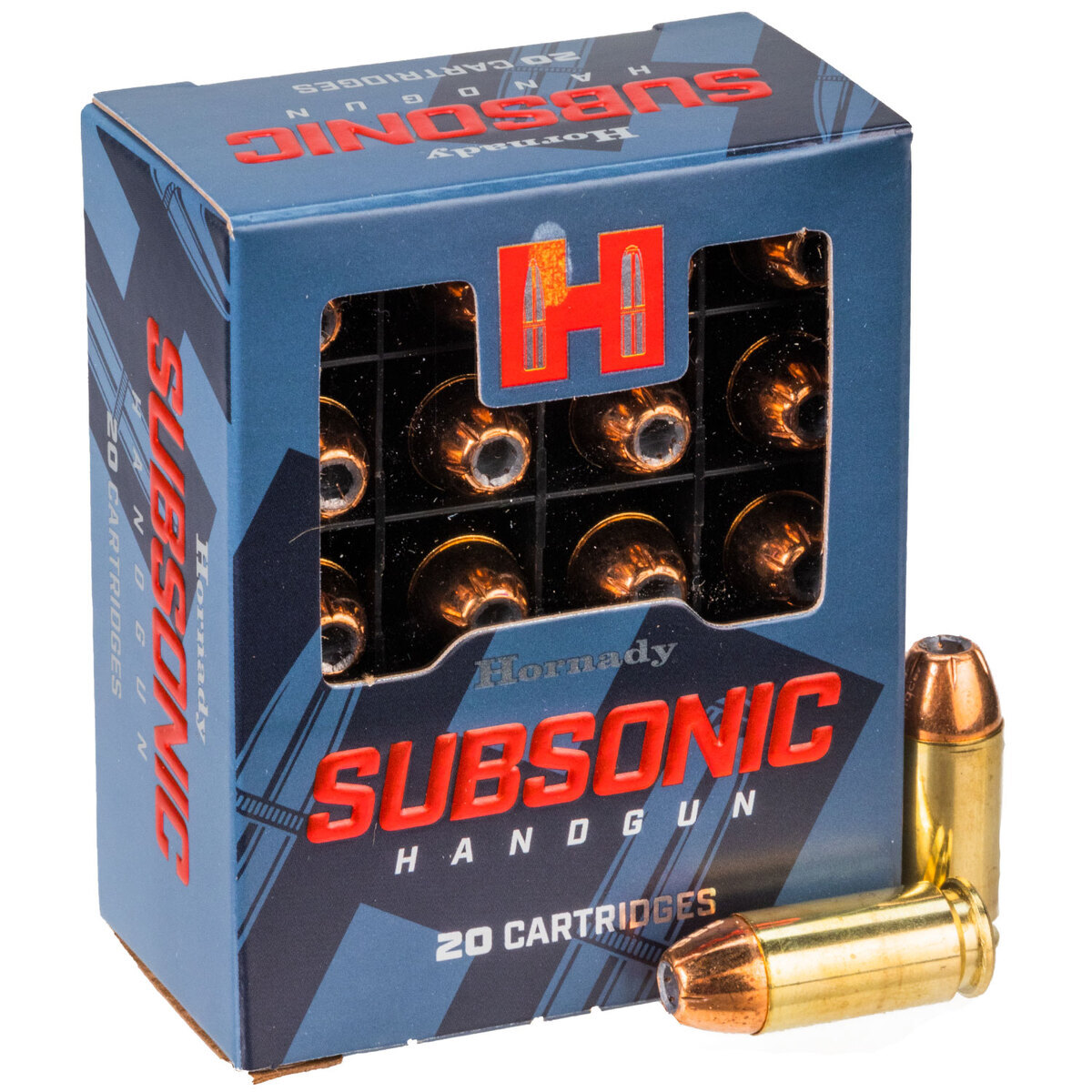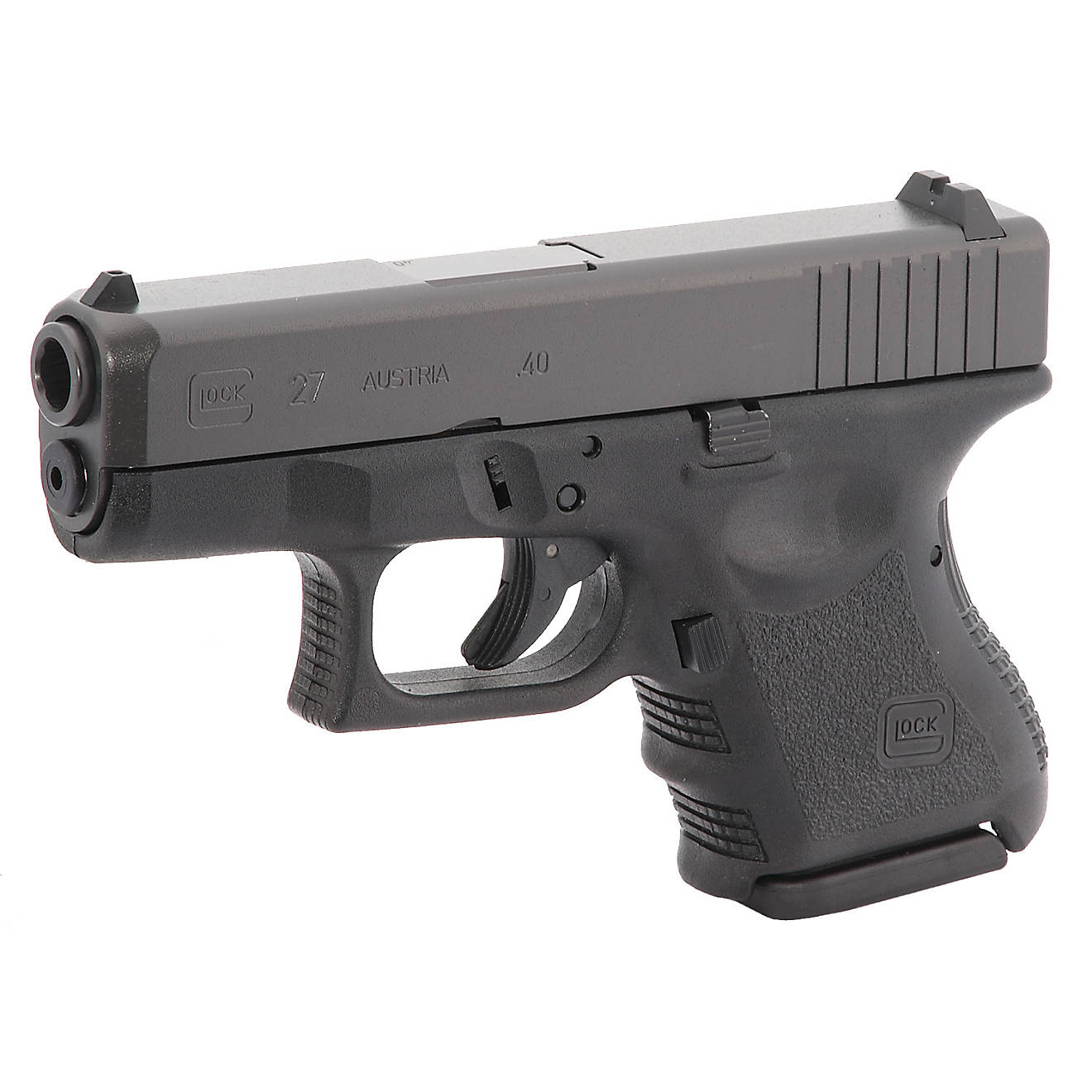Glock 40 Ammo Type - The .40 S&W is a rimless pistol cartridge developed by American firearms manufacturers Smith & Wesson and Winchester in 1990.
The .40 S&W was developed as a law enforcement cartridge designed to duplicate the performance of the Federal Bureau of Investigation's (FBI) 10mm reduced-velocity auto cartridge that can be recovered in commercially available handguns. medium automatic (9mm size). It uses 0.40-inch (10 mm) diameter ammunition weighing between 105 and 200 grains (6.8 to 13.0 g).
Glock 40 Ammo Type

This section needs more citations for verification. Please help improve this article by adding citations from reliable sources. Unsourced material may be challenged and removed. Source: ".40 S&W" – news · journal · book · scholarly · JSTOR (August 2021) (Learn how and why to remove this sample notice)
Glock 22 Gen3 California Legal
After the 1986 Miami FBI shootings, in which two FBI special agents were killed and five wounded, the FBI began testing the 9×19 mm Parabellum and .45 ACP ammunition in preparation for replacing its standard firearm with a semi-automatic. pistol
Semi-automatic pistols offer two advantages over revolvers: increased ammunition capacity and increased ability to load more easily during a gun. The FBI is pleased with the lead performance of the .38 Semiconductor Hollow Head Toner Cartridge (LSWCHP) .38 Special +P 158 gr (10.2 g) ("FBI Cartridge") based on decades of reliable performance. Ammunition for the new semi-automatic pistol must provide end-to-end performance equal to or superior to the FBI's .38 Special load. The FBI has developed a series of reality-based tests involving eight test events that it believes reasonably limit the types of situations the FBI typically counterattacks during shootings.
During the testing of the 9 × 19 mm and .45 ACP ammunition, the Chief of the FBI Weapons Training Unit, John Hall, decided to put to the test the Auto 10mm cartridge, offering the semi-automatic and personally loaded Colt Delta Elite 10 mm. . FBI tests showed that a 10mm JHP bullet weighing 170–180 g (11.0–11.7 g), launched at 900–1,000 ft/s (270–300 m/s), achieved the desired terminal performance without recoil associated massive. and traditional 10mm ammunition (1, 300-1, 400 ft/s (400-430 m/s)). The FBI contacted Smith & Wesson and asked them to design a pistol to FBI specifications, based on the existing large Smith & Wesson Model 4506.45 ACP pistol, that would work reliably with the FBI's 10 mm slug ammo. In this partnership with the FBI, S&W realized that reducing the full capacity by 10mm to meet the FBI's average velocity specifications meant less powder and more space in the case. They discovered that by removing the airspace, they could shorten the 10mm cartridge to fit medium frame 9mm pistols and load it with a 180 gr (11.7 g) JHP round to create ballistic performance consistent with the reduced velocity 10mm cartridge The FBI. S&W partnered with Winchester to produce a new toner cartridge, the .40 S&W. It uses a small pistol primer while the 10mm cartridge uses a large pistol primer.
The .40 S&W cartridge was launched on January 17, 1990, along with the new Smith & Wesson Model 4006 pistol, although it took several months before these pistols became available for purchase. Austrian manufacturer Glock Ges.m.b.H. was on the market before Smith & Wesson in 1990, and the .40 S&W pistols (Glock 22 and Glock 23) were announced a week before the 4006.
How Many Rounds Does A Glock Hold?
The rapid introduction of the Glock was helped by the introduction of a 10mm Auto barrel pistol, the Glock 20, just a short time before that. Since the .40 S&W uses the same bore and case head diameter as the 10mm Auto, it was only a matter of adapting the 10mm design to the shorter 9×19mm Parabellum frames. The new guns and ammunition were an instant hit,
And new pistol calibers have been adopted by a number of regulatory agencies around the country, including the FBI, which approved the Glock pistol in .40 S&W in May 1997.
The .40 S&W's popularity was accelerated by the passage of the now-expired federal Assault Weapons Ban of 1994, which banned the sale of pistol or rifle magazines that could hold more than one cartridge, regardless of caliber. Some US states, and some local governments, also ban or regulate so-called "high volume" magazines. As a result, many new gun buyers who limit their purchases to pistols with a maximum magazine of 10 rounds have opted for pistols in .40 S&W Bay instead of smaller diameter cartridges such as 9x19mm (9mm Luger or 9mm Parabellum).

.40 S&W case length and overall cartridge length were short-circuited, but other opacities except for case thickness and wall thickness remained unchanged in the 10mm Auto. Both cartridges have a gap on the cartridge mouth. Therefore, in semi-automatic machines, they cannot be replaced. Fired in a 10mm semi-automatic, the .40 Smith & Wesson cartridge will fly through the gap on the extractor and the bullet will jump out of the 0.142 inch (3.6 mm) diameter like a .38 Special fired from a . 357 Magnum. revolver If the extractor does not hold the cartridge, the chance of the primer breaking is very high.
Best 9mm Ammo In 2021 [self Defense & Target]
Smith & Wesson made a double-action revolver (Model 610) that could fire both cartridges through the use of moon clips. A single-action revolver in the .38–40 range can also shoot .40 or 10 mm as long as it is equipped with a correctly sized cylinder. Some .40 caliber pistols can be converted to 9mm with specially built barrels, replacement magazines and other components.
The common rifling velocity for this cartridge is 406 millimeters (16.0 in), 6 rails, ∅ Groove = 9.91 ;mm, ∅ Groove = 10.17 mm, Groove width = 3.05 mm and the bait type is a small pistol.
According to C.I.P. According to the instructions, the .40 S&W case can handle piezo pressures up to 225 megapascals (32, 600 psi). In countries regulated by C.I.P. administration, any pistol/box combination must prove at 130% of C.I.P. certification pressure to sell to consumers. The SAAMI pressure limit for the .40 S&W is set at a piezo pressure of 241.32 megapascals (35.001 psi).
An extended hollow point bullet (Winchester SXT "Black Talon", left) and an unfired .40 S&W cartridge (Speer Gold Dot, right)
Winchester White Box, .40 S&w, Fmj, 180 Grain, 50 Rounds
The .40 S&W cartridge has been popular with law enforcement agencies in the United States, Canada, Australia, and Brazil. Despite possessing almost invisible precision,
Marshall & Sanow (and other hydrostatic shock propulsion devices) suggest that with well-enveloped hollow point bullets, most loads for the .40 S&W can also produce hydrostatic shock against live human-sized targets.
Based on the ideal terminal ballistic performance of gun gelatin during laboratory testing in the late 1980s and early 1990s, the .40 S&W achieved status as "the ideal cartridge for personal defense and law enforcement".
Ballistically, the .40 S&W was not nearly identical to the .38-40 Winchester introduced in 1874, as they had the same bullet diameter and bullet weight, and had the same muzzle velocity.
Sb 40 S&w 180gr Fmj Ammunition 50 Rounds
The .40 S&W's power exceeds the pressure of the standard .45 ACP load, generating power between 350 foot-pounds (470 J) and 500 foot-pounds (680 J), depending on bullet weight. Both the .40 S&W and 9mm Parabellum operate at up to 35,000 pounds per square inch (240 MPa) SAAMI, compared to a maximum of 21,000 pounds per square inch (140 MPa) for the .45 ACP.
The .40 S&W pistol with a standard (non-expandable) two-chamber magazine holds up to 16 rounds. While not replacing the 9mm Parabellum, the .40 S&W is often used in legally binding applications that match its origins with the FBI. Select US special operations units have .40 S&W and .45 ACP pistols available. The US Coast Guard, tasked with maritime law enforcement and military deployments, has used the SIG Sauer P229R DAK in .40 S&W as their standard secondary weapon.
As of 2020, however, the US Coast Guard has used the Glock 19 G5 MOS as its new secondary weapon. Many federal and local law enforcement agencies are currently in the process of transitioning from .40 S&W to 9mm, most notably the FBI, which approved 9mm handguns in 2015.
In 2019, US Customs and Border Protection adopted a 9mm Glock pistol, replacing the .40 S&W Heckler & Koch P2000 CBP previously used.
Hornady Subsonic Xtp 40 S&w 180gr Jhp Handgun Ammo
Since its introduction, various loads have been produced, most of which are 155, 165 or 180 g (10.0, 10.7 or 11.7 g).
However, some bullets are as light as 135 g (8.7 g) and weigh as much as 200 g (13.0 g).
Both Cor-Bon and Winchester offer JHP 135 gr (8.7 g) and Cor-Bon also offers a Barnes XPB 140 gr (9.1 g) bore. Double Tap Ammo, based in Cedar City, Utah, loads a single 135gr (8.7g) Nosler JHP, a 155gr (10.0g), 165gr (10.7g) and a 180gr (11.7g) Speer Gold Dot. (marketed). as "Bonded Defse"), a 180 gr (11.7 g) Hornady XTP JHP and three different 200 gr (13.0 g) loads including Full Metal Jacket 200 gr (13 g) (FMJ), 200 gr (13 g) Hornady XTP JHP. and WFNGC Double Tap (Wide Nose Flat Nose Gas Test) 200 gr (13 g) Hard Lead Bullet; The latter is designed specifically for hunting and logging applications.

.40 S&W has been documented in several cases of magazine failure associated with older Glock pistols, due to the relatively large area of the tip of the cartridge that is not supported in these barrels, creating chamber pressure levels to allow it.
Winchester Target 40 S&w 165gr Fmj Handgun Ammo
Load paths on Glock .40 S&W pistols are larger than on
Glock 40 mos review, glock 40 specs, automatic glock 40, glock 40 10mm review, 40 mm glock, glock 40 frame, best glock 40, 40 cal ammo box, glock 40 s&w, glock 40 10mm holster, 40 mm ammo can, 40 glock with beam
